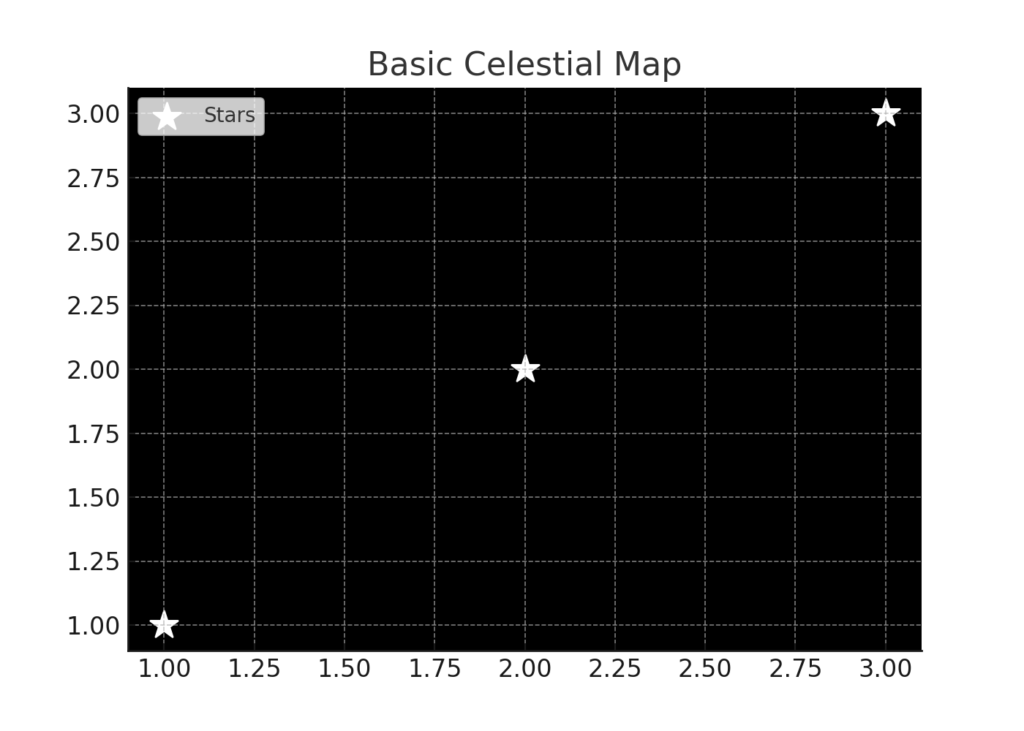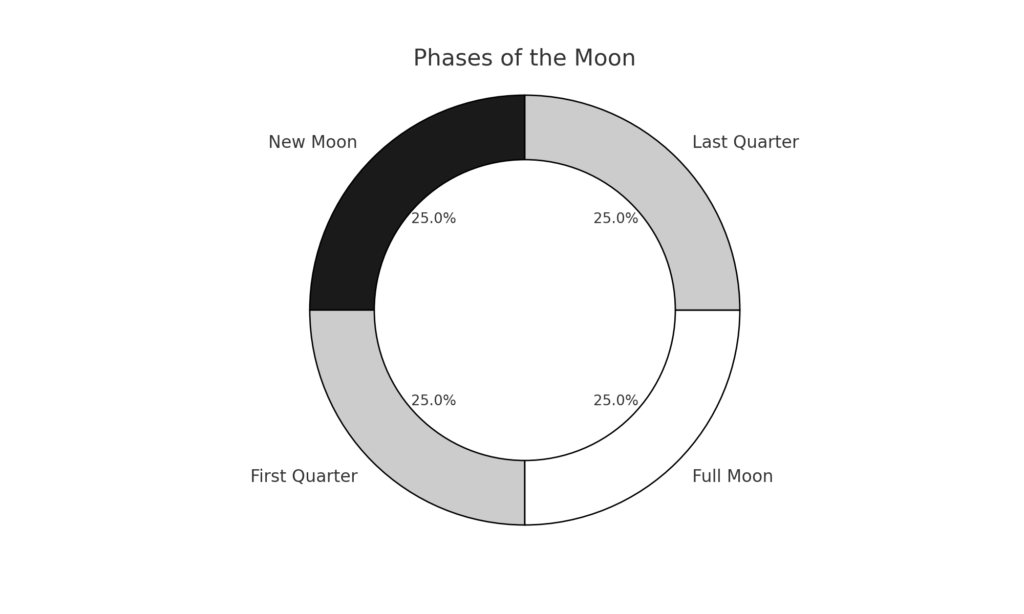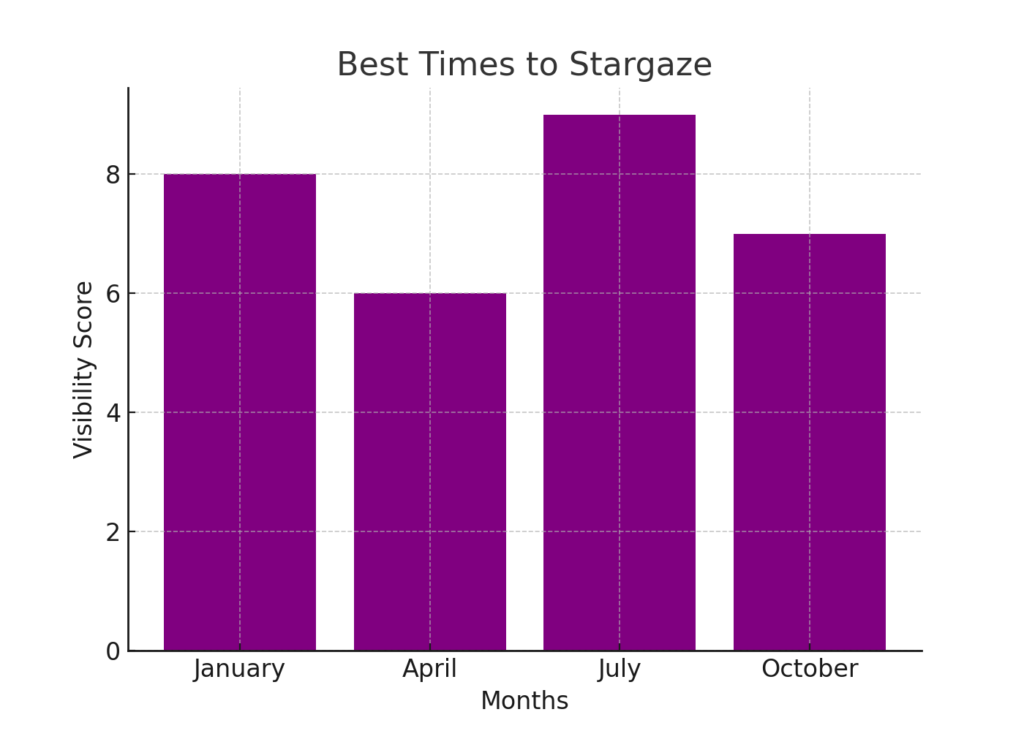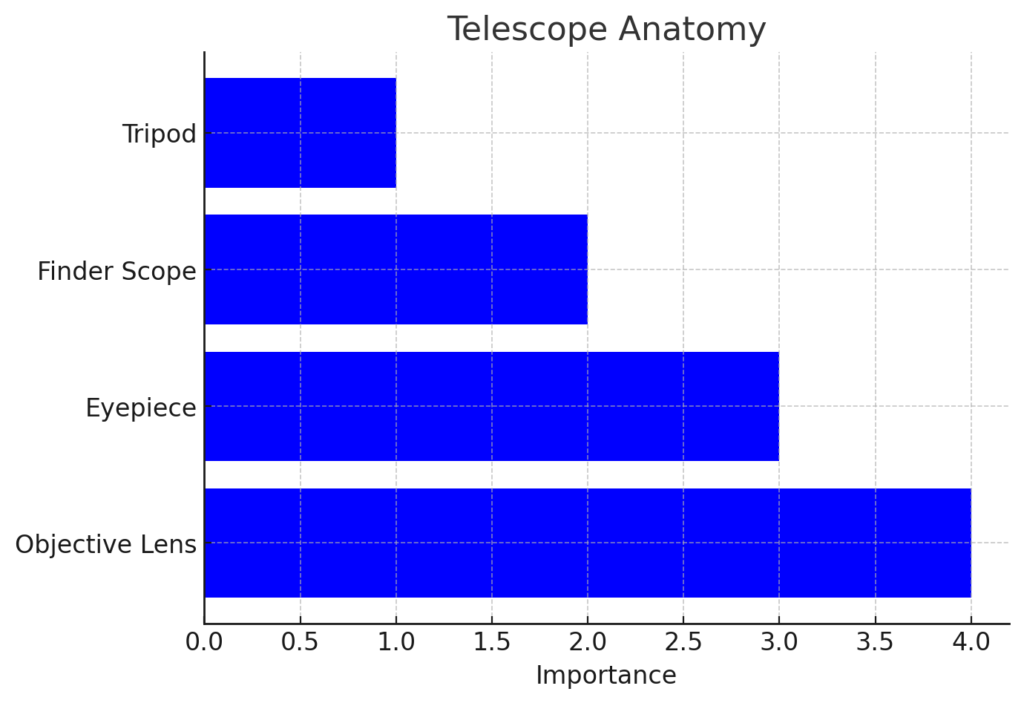Welcome to our definitive guide on stargazing for beginners! Whether you’re simply curious about the night sky or are looking to dive deeper into the world of celestial observation, this guide has got you covered. We’ll walk you through the following five key areas:
- Why Stargaze?: Discover the significance and rich history of looking up, and explore its connection to astronomy and astrology.
- What You’ll Need: We list the basic equipment for newcomers and additional gadgets for the more experienced among you.
- Best Time and Places: Timing is crucial in stargazing. Learn about the moon phases and the best locations to make the most of your experience.
- Basic Tips for Beginners: Get started with actionable tips, app suggestions, and step-by-step how-to guides.
- Beyond Stargazing: What’s next after mastering the basics? Learn advanced techniques and upcoming celestial events worth marking on your calendar.
Ready to embark on your celestial journey? Let’s dive in!
Why Stargaze?
The Significance and History of Stargazing
Stargazing has fascinated humanity for millennia. Before it was a hobby, it was a tool for survival and understanding the world. Early humans used the stars to navigate and mark the passing of time, giving the stars and celestial events cultural and spiritual significance. As we progressed as a civilization, stargazing has evolved into both a recreational activity and a scientific endeavor.
| Timeline | Events |
|---|---|
| Ancient Times | Used for navigation and timekeeping |
| Middle Ages | Astrological significance ascribed to celestial bodies |
| Modern Era | Advanced telescopes and scientific observation |
Connection to Astrology and Celestial Observations
While stargazing mainly belongs to the realm of astronomy today, its historical ties to astrology cannot be overlooked. Astrology, the study of the movements and relative positions of celestial bodies and their influence on human affairs, shares a common ancestry with stargazing. You may be intrigued to delve deeper into how astrology differs from astronomy, especially if you have an interest in the Big Three of astrology: the Sun sign, Moon sign, and Rising sign. These concepts offer a more spiritual and psychological perspective on the significance of celestial bodies in our lives.
You may also find it fascinating that stargazing can give you a unique appreciation for Saturn’s role in astrology. Saturn, often referred to as the taskmaster of the zodiac, teaches us life lessons and helps us grow spiritually, much like how the act of stargazing itself can be a spiritually enriching experience.
List of Recommended Apps for Beginners:
- Stellarium
- Star Walk 2
- SkyView
Stargazing isn’t just about looking up; it’s about understanding your place in the universe, whether through the lens of astronomy or the ancient wisdom of astrology.
This is just the beginning of your journey into the world of stargazing. Stay tuned as we explore what you’ll need for stargazing, tips for beginners, and much more!
Getting Started to Stargazing
Stargazing is a delightful hobby that can be enjoyed by people of all ages. But like any other hobby, a little preparation can go a long way. In this section, we’ll guide you through some of the essentials you’ll need to start your journey into the world of celestial observation.
Essential Equipment for Beginners
Before you head out to observe the night sky, you’ll need some basic equipment. Here’s a quick rundown:
| Equipment | Why You Need It | Where to Buy |
|---|---|---|
| Telescope | For magnification | Online Stores |
| Star Maps | To locate celestial bodies | Bookshops |
| Compass | To find direction | Outdoor Stores |
| Notebook | For observations | Stationery Stores |
Having the right equipment not only enhances your stargazing experience but also allows you to learn and observe more effectively.
Finding the Perfect Spot
Location is key when it comes to stargazing. You’ll want to find a spot that’s far away from city lights and has a clear, unobstructed view of the sky.

Weather and Timing
The best time to stargaze is on a clear, moonless night. Cloudy or foggy conditions can obstruct your view, so always check the weather forecast before heading out.

What You’ll Need for Stargazing
Before diving into the night sky, you’ll need to gather some basic equipment. Whether you’re a novice or a more advanced stargazer, being prepared will make your experience more enjoyable and meaningful.
Basic Equipment
List of Essential Items for Beginners
- A Clear Sky: This might sound obvious, but you’d be surprised how many overlook this!
- Stargazing App: Helpful for identifying constellations and planets.
- A Comfortable Chair or Blanket: For those extended stargazing sessions.
- Notebook and Pen: To jot down your observations or sketch what you see.
- Red LED Flashlight: To preserve your night vision.
Equipment Why You Need It Where to Buy Telescope For magnification Online Stores Star Maps To locate celestial bodies Bookshops Compass To find direction Outdoor Stores Notebook For observations Stationery Stores
Subsection 2.2: Optional Equipment
Additional Items for More Advanced Stargazers
- Telescope: Once you get the hang of things, you might want to invest in a telescope.
- Star Charts: Useful for those who prefer a more traditional approach.
- Binoculars: Good for a closer look at the moon or certain stars.
- Camera with Long Exposure: For those looking to capture the night sky.
If you’re considering investing in more advanced equipment like telescopes, it might be helpful to first understand what the Midheaven is in astrology. This celestial point could influence what you’re most drawn to observe in the sky.
Best Time and Places for Stargazing

Best Time to Stargaze
The best time to go stargazing is when the sky is clear, and there is minimal light pollution. Additionally, the phase of the moon can significantly affect your stargazing experience.
Best Times for Stargazing
| Moon Phase | Visibility | Best For |
|---|---|---|
| New Moon | Excellent | Deep sky objects |
| First/Last Quarter | Good | Planets and Stars |
| Full Moon | Poor | Moon itself |
For those curious about time’s influence on astrology, you might be interested in how your birth time impacts your astrological chart.
Best Places to Stargaze
The location you choose can make or break your stargazing experience. You’ll want to avoid areas with high light pollution. Here are some tips for finding the perfect spot:
- National or State Parks: Usually a great bet for minimal light pollution.
- Open Fields: More sky visibility.
- High Elevations: Less atmospheric interference.
Before you head off, perhaps you’re wondering when you’ll meet your true love, according to astrology. Gazing at the sky might just provide you with the inspiration to delve deeper into such questions.
So there you have it, from the basics to the advanced, and from the “when” to the “where.” Stay tuned as we explore more tips and tricks to make your stargazing experience unforgettable.
Basic Tips for Stargazing for Beginners
Embarking on your stargazing journey can be as effortless as looking up. However, a few tips can significantly enhance your experience.
Beginner-Friendly Tips:
- Start Simple: Focus on one part of the sky rather than trying to take it all in at once.
- Use a Stargazing App: Apps like Star Walk or SkyView can be beneficial for beginners.
- Observe Planets: They’re usually brighter and easier to spot.
- Be Patient: Your eyes take about 15-20 minutes to adjust to the darkness.
- Invite Friends: Stargazing is an excellent social activity, and more eyes make for more discoveries.
If you’re new to the realm of celestial observations, you might also want to read about what the Big Three in astrology are. This can add another layer to your understanding of the sky.
Telescope Types: Choosing the Right One for You
Selecting the right telescope is crucial for a satisfying stargazing experience. There are mainly three types of telescopes you should consider as a beginner: Refractor Telescopes, Reflector Telescopes, and Compound Telescopes.

Types of Telescopes
| Type | Pros | Cons | Best For |
|---|---|---|---|
| Refractor | Easy to use, less maintenance | Generally more expensive, limited aperture | Beginners, lunar observation |
| Reflector | Affordable, good for deep-sky observation | Requires frequent alignment | Deep-sky objects |
| Compound | Versatile, good for both sky and land | Complex, not ideal for beginners | Versatility |
Refractor Telescopes
These are the most common types of telescopes and are excellent for lunar and planetary observation. They are easy to set up and require less maintenance.
Reflector Telescopes
These telescopes are great for those who are interested in deep-sky objects like galaxies and nebulae. They are generally more affordable but require frequent alignment.
Compound Telescopes
These telescopes offer the best of both worlds but can be quite complex. They are versatile but may not be the best choice for beginners.
Choosing the right type of telescope will significantly enhance your stargazing experience. Take your time to understand the pros and cons of each to make an informed decision.
How-To Guides, App Suggestions, etc.
- How to Use a Telescope: There are plenty of YouTube tutorials available.
- Recommended Apps: Sky Guide, Star Walk 2, and Stellarium.
- Stay Organized: Use a notebook or an app to jot down your findings.
Section 5: The Connection to Astrology
Stargazing is not just an aesthetic experience; it’s deeply rooted in human history, spirituality, and yes, astrology. While astronomy is the scientific study of celestial bodies, astrology offers a more mystical take on these celestial bodies’ impact on our lives. To understand stargazing fully, it’s essential to dive into its intimate relationship with astrology. While both disciplines observe celestial bodies, their aims differ: stargazing is an observational science, while astrology seeks to interpret how these celestial bodies influence human affairs and natural phenomena.
Brief Discussion of How Stargazing Relates to Astrology
The night sky has been a canvas of stories, prophecies, and guidance for centuries. Civilizations have looked up to ponder questions about destiny, purpose, and cosmic influence.
Exploration of Celestial Bodies and Their Significance in Astrology
- The Moon: Signifies emotions and subconscious.
- The Sun: Represents our basic personality and ego.
- Saturn: Known as the taskmaster, it’s all about lessons and growth.
- Mars: Often related to action, drive, and determination.
- Venus: Represents love, beauty, and relationships.
Understanding the significance of these celestial bodies can offer a more profound experience when stargazing. If you’re fascinated by Saturn, for instance, you might want to explore what Saturn symbolizes in astrology.
And there you have it! Whether you’re just starting out or seeking to deepen your celestial journey, there’s a universe of options waiting for you to explore.
Beyond Stargazing: What’s Next?
So you’ve got the basics down and you’re hooked. Excellent! Now it’s time to look at how you can take your newfound hobby to the next level.
Discuss Advanced Stargazing Techniques
- Astrophotography: Capture stunning images of the night sky.
- Deep-Sky Observing: Go beyond planets and explore nebulae, star clusters, and even other galaxies.
Mention of Upcoming Celestial Events
- Meteor Showers: Keep an eye out for the Perseids or Geminids.
- Solar and Lunar Eclipses: Rare but awe-inspiring.
For the passionate celestial observer, following astrological forecasts can also provide an exciting dimension to your hobby.
Further Reading and Resources
- Books: “NightWatch: A Practical Guide to Viewing the Universe” by Terence Dickinson.
- Websites: Sky & Telescope, Astronomy.com.
To learn more about astrology’s history, consider reading our article on who invented astrology in India.
So there you have it—a comprehensive guide to stargazing for beginners and what lies beyond. Whether you’re observing planets or pondering astrological implications, remember that the sky’s the limit.
Stargazing is a rewarding hobby that allows us to connect with the universe in a unique way. From understanding the basic equipment to diving deeper into celestial events and their astrological significance, this guide aims to provide a holistic approach to stargazing. So what are you waiting for? Grab your telescope or even just your eyes, and embark on a cosmic journey you’ll never forget. For more intriguing insights, don’t hesitate to delve into the realm of Stellium in Astrology to explore more celestial phenomena.
FAQ about Stargazing for Beginners
Is stargazing an expensive hobby?
It can be as affordable or as lavish as you make it. Basic stargazing requires very little—your eyes and a clear night are often enough.
How do I know which star I’m looking at?
There are many apps designed to help identify celestial bodies. Simply point your phone to the sky, and it’ll help you out.
How does the moon’s phase affect stargazing?
A full moon can wash out many fainter stars and objects. It’s usually better to stargaze during a new moon or when the moon isn’t visible.
Can astrology offer insights into my stargazing experience?
While astrology and stargazing are different, they both involve celestial bodies. Knowing some basic astrological principles can add an additional layer of significance to your observations.
Where can I go for more advanced stargazing techniques?
Our blog post on MC in Astrology is a great starting point for advanced stargazers looking to combine astrology with their hobby.

Hello! I’m Kirill, the guy who turns web pages into visitor magnets. How, you ask? The secret lies in my magical prowess. Also I love to ask stars about my future I am ready to tell you all they say to me ✨